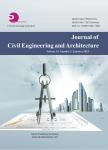
T=题名(书名、题名),A=作者(责任者),K=主题词,P=出版物名称,PU=出版社名称,O=机构(作者单位、学位授予单位、专利申请人),L=中图分类号,C=学科分类号,U=全部字段,Y=年(出版发行年、学位年度、标准发布年)
AND代表“并且”;OR代表“或者”;NOT代表“不包含”;(注意必须大写,运算符两边需空一格)
范例一:(K=图书馆学 OR K=情报学) AND A=范并思 AND Y=1982-2016
范例二:P=计算机应用与软件 AND (U=C++ OR U=Basic) NOT K=Visual AND Y=2011-2016

摘要:Publicly available building energy data are exploding--thirteen American cities and 14 states now require them by law. This emergence of data nudges building owners and tenants to reduce energy consumption by comparing their usage to that of similar buildings. However, vast untapped energy reductions and deeper physical understandings can still be extracted from these data. This paper extends the energy saving impact and provides key insight into building performance through publicly-disclosed data by describing three initiatives at a large design finn. An internal high performance design reporting program compares projects from around the world and across offices. A case study of 706 buildings in New York City illustrates the value of tracking large-scale patterns to a design firm. Per capita energy and carbon usage is correlated to life expectancy to better inform neighborhood and city design. As more data freely flow out into the public, engineers must strategically engage it.
地址:宁波市钱湖南路8号浙江万里学院(315100)
Tel:0574-88222222
招生:0574-88222065 88222066
Email:yzb@zwu.edu.cn

